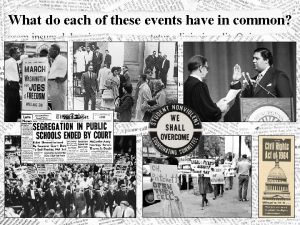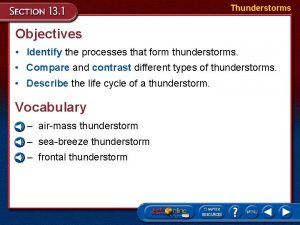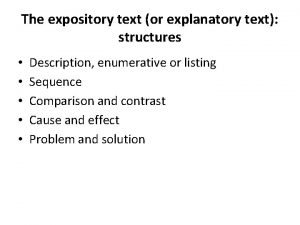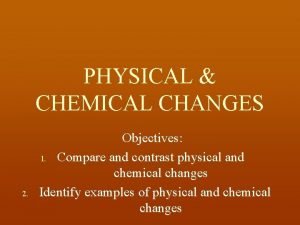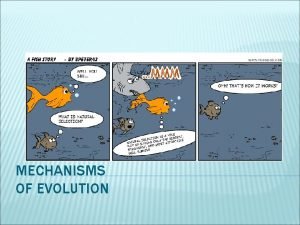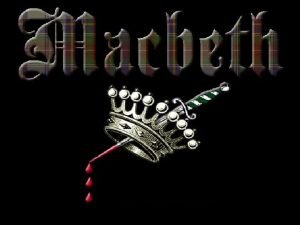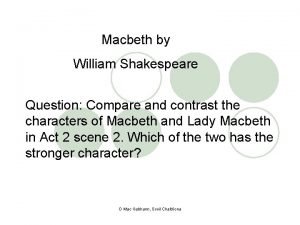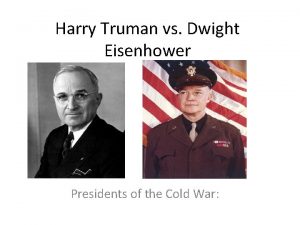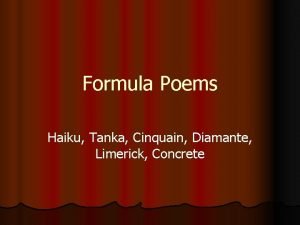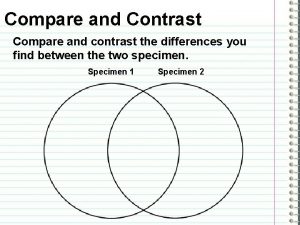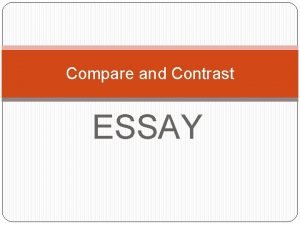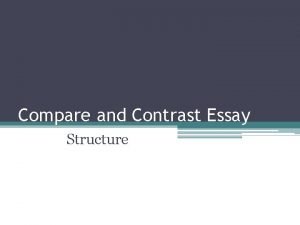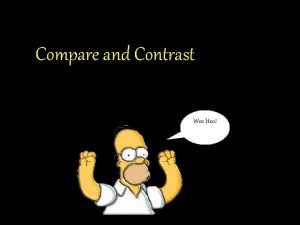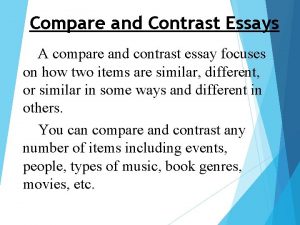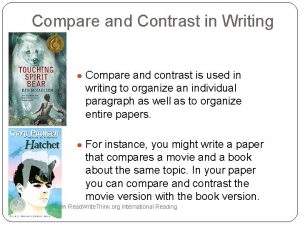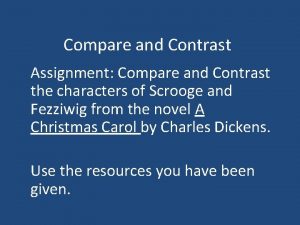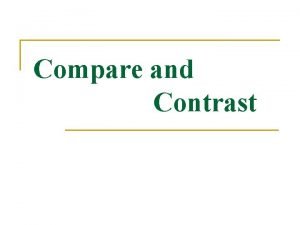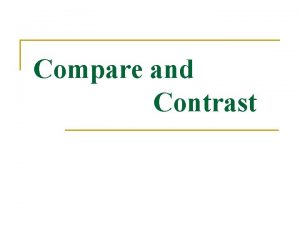Aim To compare and contrast the differences in




















- Slides: 20

* Aim: To compare and contrast the differences in Structure between the Scottish Parliament and the UK parliament

*There are many differences between the UK and the Scottish Parliament with regards to structure, representation and work carried out.

* *The UK parliament is made up of two houses – The House of Commons and the unelected House of Lords. *When bills are being discussed or important decisions are being made, issues will travel through both houses!

*In Scotland decisions are taken by a single elected Scottish parliament where members of the Scottish Parliament (MSPs) meet to discuss, debate and make decisions on behalf of the people.

* *Each constituency has one local Member of Parliament (MP) to represent their views in the UK parliament. This means there is direct link between each representative and their constituents. There are 650 constituencies in the UK and 650 MPs sitting in the House of Commons. Your MP for Banff and Buchan is Eilidh Whiteford.

59 out of the 650 MPs are elected from Scotland. 2010 result: 2015 result:


* The UK Parliament and the Scottish parliament also use different voting systems. * The UK government is elected using a majority system called first past the post. This usually creates majority governments. * The Scottish Parliament is elected using a proportional representation system called Additional Members System. This system usually results in Coalitions. *

*Many people feel that a majority government is better for running a country. Others think that coalitions are better. In groups of 3 or 4 write down some reasons for why you think majority governments are better and some reasons why you think coalitions are better.

* *The UK Parliament continues to make decisions on some of the issues that affect the nation as a whole or have an international impact. We looked at this last week – can you name any issues that are dealt with by the UK and ones dealt with by the Scottish parliament.

* *Both MPs and MSPs will have similar schedules. carry out similar daily work and will *The main difference is that MPs will travel to the Westminster Parliament in London but MSPs will travel to the Scottish Parliament in Holyrood. *Parliamentary work can include debates, joining committees and asking questions at Question Time. *Constituency work can include holding surgeries and responding to constituents letters.


1. The Scottish Parliament can be seen as a modern Parliament because of: The seating arrangements The MSPs sit in a horseshoe shaped room facing the Speaker. In the House of Commons, the MPs face one another, so it is noisier and leads to more conflict between government and opposition MPs.

2. Hours of sitting The business day in the Chamber of the Parliament is 9. 00 – 5. 00. In the House of Commons, MPs may need to vote after 10 pm. This makes them more tired and grumpy! Plus all 129 MSPs are guaranteed a seat: many MPs have to stand when the House of Commons is busy.

3. How MSPs address each other This is much more informal than in the House of Commons. MPs cannot mention other MPs by name, only by the constituency they represent. The Scottish Parliament has no men and women is wigs and breeches with job titles like ‘Sergeant at Arms’.

4. The way MSPs vote This is done electronically, so decisions are announced almost immediately. In the House of Commons, MPs have to physically move through either the ‘Aye’ or ‘No’ lobbies and be counted by officials known as Tellers. This takes time and effort, often causing a long delay before votes are announced.

* *There has generally been a positive relationship between Westminster and the Scottish Parliament. *This was agreed in the Memorandum of Understanding in September 2012 *Joint Ministerial Committee, established by the MOU which looks at non devolved issues

*Since devolution over 1000 years ago, there has been a positive relationship between Westminster and the Scottish Parliament. *Memorandum of Understanding (Mo. U) *Joint Ministerial Committees *

* Read pages 6 -9 in ‘Democracy in Scotland’ workbook and complete Task 2 (q 1 -5) – The UK Parliament and The Scottish Parliament on page 10. Task: you have been asked by the Scottish Parliament to create a colourful and informative leaflet about Holyrood. The point of this leaflet is to let other people in your family and community know about the differences between Holyrood and Westminster. This should include at least 4 differences!

What have I learned today? Traffic light your learning today: • I can compare and contrast the Scottish Parliament to the UK Parliament by providing four ways that the parliaments differ.
 West side story vs romeo and juliet
West side story vs romeo and juliet What was the purpose of the sibley commission
What was the purpose of the sibley commission Draw and label a longitudinal wave
Draw and label a longitudinal wave Spring tide position
Spring tide position Compare and contrast cold wave and wind chill factor
Compare and contrast cold wave and wind chill factor Explanatory text structure
Explanatory text structure Compare and contrast analog and digital forecasts.
Compare and contrast analog and digital forecasts. Contrast signal words
Contrast signal words The most dangerous game plot diagram
The most dangerous game plot diagram Example of longitudinal wave
Example of longitudinal wave Compare and contrast chemical and physical changes
Compare and contrast chemical and physical changes Compare and contrast gradualism and punctuated equilibrium
Compare and contrast gradualism and punctuated equilibrium Compare and contrast macbeth and lady macbeth
Compare and contrast macbeth and lady macbeth Compare and contrast macbeth
Compare and contrast macbeth Lady macbeth quotes
Lady macbeth quotes Instrumental music of india pakistan and israel
Instrumental music of india pakistan and israel Truman vs eisenhower
Truman vs eisenhower Harry potter vs draco malfoy
Harry potter vs draco malfoy Immigration definition biology
Immigration definition biology Cinquain vs diamante
Cinquain vs diamante Compare and contrast mutualism and parasitism
Compare and contrast mutualism and parasitism

